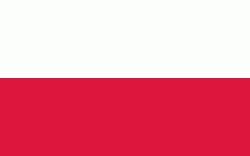Żywiec
 |
The 551231 Żywiec planetoid is named after the town.
Żywiec was first mentioned in a written document in 1308 as a seat of a Catholic parish. It was originally located in the place later known as Stary Żywiec (lit. "Old Żywiec"). It belonged then to the Duchy of Cieszyn, and after 1315 to the Duchy of Oświęcim, which in 1327 became a fief of the Kingdom of Bohemia. The town was a focal point for the development of hitherto sparsely populated Żywiec Basin. The area of Stary Żywiec was prone to flooding so the town was moved to the current spot in 1448. In 1457 the Duchy of Oświęcim was purchased and incorporated directly to the Polish Crown. Żywiec was a private town, administratively located in the Kraków Voivodeship in the Lesser Poland Province of the Polish Crown. In 1624 it was sold by the Komorowski family to Constance of Austria, queen consort of the Polish king Sigismund III Vasa. During the Deluge, Żywiec was plundered and destroyed by Swedish troops in 1656. From 1672 it was a possession the Polish chancellor (Kanclerz) Jan Wielopolski.
The Old Castle was built in the mid-14th century. The castle has undergone several restorations and boasts a number of styles of architecture and decoration, including Gothic, Renaissance and Baroque. Żywiec's Old Castle is encompassed by a 260,000 square metre landscape park, which was established initially in the 17th century.
The Church of the Holy Cross was built towards the end of the 14th century, and expanded twice, once in 1679 and again in 1690. In the 18th century, a Baroque church was later constructed on the site and still stands today. A second noteworthy church, the Cathedral of the Virgin Mary's Birth, was constructed and expanded during the first half of the 15th century, before being renovated in Baroque fashion after a fire in 1711.
Upon the First Partition of Poland in 1772, Żywiec became part of the Austrian Kingdom of Galicia. In 1810 it was purchased by Prince Albert of Saxony, son of King Augustus III of Poland and again ruled with the neighbouring Silesian Duchy of Teschen (Cieszyn). When he died in 1822, his estates fell to Archduke Charles from the Austrian House of Habsburg-Lorraine. The town also houses the Żywiec Brewery, established by Charles' son Archduke Albert in 1852, and purchased by Heineken International in the 1990s. A museum was founded at the site in 2006. At the beginning of World War I, over 1,000 soldiers of the Polish Legions from the region marched out from Żywiec to fight for Polish independence; 167 of them died in the war. At the end of the war, in 1918, Poland regained independence and control of the town. Eight Poles from Żywiec were killed in the Polish–Soviet War of 1919–1920.
Map - Żywiec
Map
Country - Poland
 |
 |
| Flag of Poland | |
Poland has a temperate transitional climate and its territory traverses the Central European Plain, extending from Baltic Sea in the north to Sudeten and Carpathian Mountains in the south. The longest Polish river is the Vistula, and Poland's highest point is Mount Rysy, situated in the Tatra mountain range of the Carpathians. The country is bordered by Lithuania and Russia to the northeast, Belarus and Ukraine to the east, Slovakia and the Czech Republic to the south, and Germany to the west. It also shares maritime boundaries with Denmark and Sweden.
Currency / Language
| ISO | Currency | Symbol | Significant figures |
|---|---|---|---|
| PLN | Polish złoty | zÅ‚ | 2 |
| ISO | Language |
|---|---|
| PL | Polish language |















